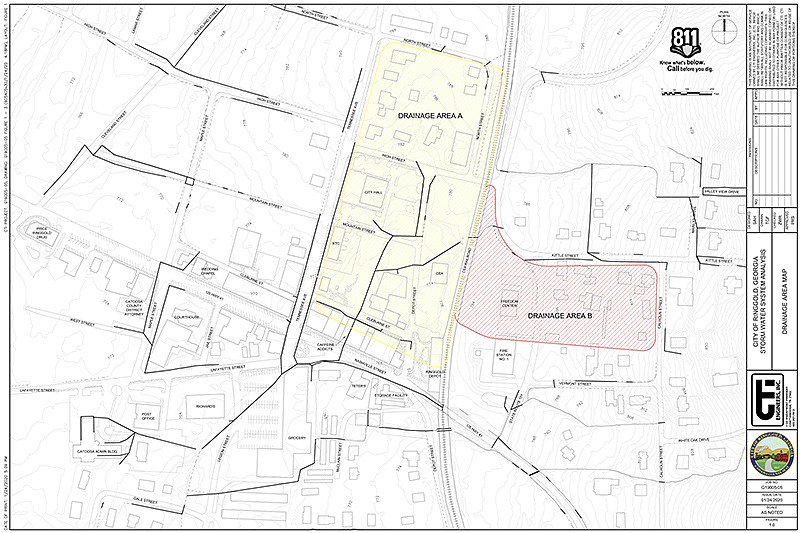To re-create eye witness accounts of a July 9, 2019, storm that flooded and shut down several businesses in downtown Ringgold, engineers had to simulate a 500-year storm event, meaning that there is a one in 500 chance of it occurring.
CTI engineer Philip Schofield said such a storm would be the equivalent of about 5 inches of rain in 15 minutes, which was consistent with eye witness accounts, but it's more likely that there was a blockage in a nearby sewage line that pushed the water and flooded businesses on Nashville Street.
Following that summer storm, at the Ringgold City Council meeting on Aug. 12, officials voted to spend $18,430 on two consulting contracts with CTI Engineers of Chattanooga to study the drainage system around the historic downtown and central business district. The first of those contracts was for a $12,000 study examining the main drainage basin on Claiborne Street, the results of which were released at the council's meeting on Jan. 27.
CTI created a map of existing stormwater infrastructure beneath the area from City Hall to Nashville Street and the downstream areas. What they learned is that the pipes were not fit for a high velocity of water.
Stormwater infrastructure is typically designed for 25-year events, Schofield said.
When the flooding first occurred in July, residents and business owners blamed a newly developed parking lot by City Hall that uses impervious asphalt that forces rainwater to run off into a retention pond and then into a drainage system. Also blamed was the Downtown Development Authority's pervious parking lot made of materials meant to catch rainwater until it can be absorbed into the soil below.
CTI recommended the city install an underground detention pond at City Hall as part of its Renaissance plan to develop the city's infrastructure. The major drain system the city has was built in the late 1990s beneath Nashville Street to South Chickamauga Creek, though the latest stormwater infrastructure projects were in 2011.
The Georgia Department of Transportation has planned to provide maintenance to the existing stormwater infrastructure on Tennessee Street, where most of the businesses affected by the storm reside.
Caffeine Addicts coffeeshop experienced some of the most reported flooding, but stormwater from the culvert was not largely to blame, the report states. Before the storm even started, aging roof gutters along the back of several businesses on Cleburne, including Caffeine Addicts, may have contributed to the amount of standing water. Since the storm, some of these gutters have been replaced, according to the report.
"Whenever you have a flash flood like that, it's hard to know what's going on," Mayor Nick Millwood said.
Schofield compared the July event to a similar one at Hamilton Place mall in Chattanooga over the summer, when a severe rainstorm flooded and closed parts of the mall.
"Inlets and pipes aren't built to withstand that amount of water," said Schofield.
Email Sabrina Bodon at sbodon@timesfreepress.com.

